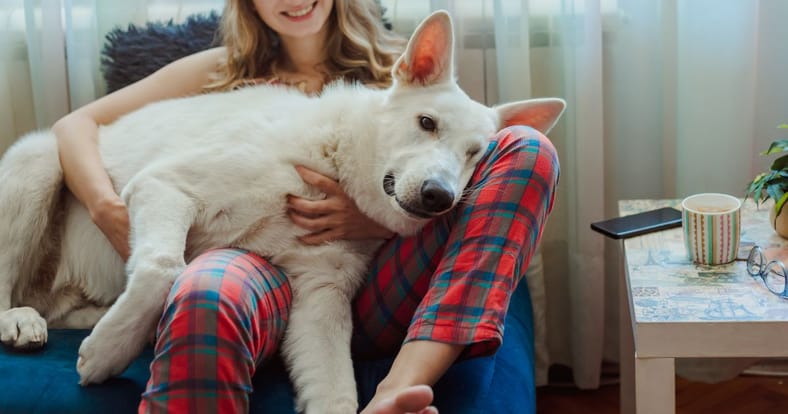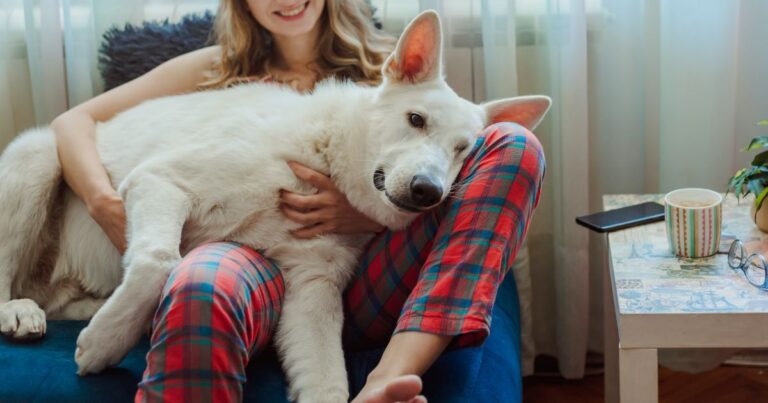11 Easy and Stress-Free Apartment Hunting Tips for Pet Owners

Accommodating your pet within your next abode choice isn’t always easy. Many tenants can attest to finding the perfect apartment only to discover at the last minute that the landlord disallows pets within the unit or the building itself is not pet-friendly.
This can be avoided if you do your homework before you decide on an apartment. Keep your pet in mind while you’re searching. After all, they’re as much a part of your family as anyone else, and you want their lives to be as comfortable as possible. Here’s how you can conduct a stress-free apartment hunt with your pet in mind.

1. Have Your Pet Deposit Knowledge at Hand
If you aren’t sure what a pet security deposit is, make sure you learn about this important aspect of renting as a pet owner. This deposit is an extra amount of money that you will pay for bringing a pet into the apartment, and it’s meant to protect the landlord from any pet-related property damage after you vacate the premises. Find out what the terms and conditions are concerning this deposit, and be sure to do everything in your list of responsibilities to get that deposit back when you move out.
2. Choose a Tiled Unit
You’re more likely to get your pet security deposit back if you select a tiled unit rather than a carpeted one. Accidents are bound to happen at some point or another, and stains on a carpet are expensive to clean and difficult to cover up. Prepare for those moments when you simply can’t get your cat or dog outside quickly enough by opting for a tiled unit which is easier to clean.
3. Contact Past Landlords for Pet Related References
Get in touch with your previous landlords and ask them to write you at least two references stating that you were a responsible pet owner. If future landlords and property managers can see that your pet was not a nuisance at other apartments, you’ll have a much easier time convincing them that your pet will be an easy co-tenant.
4. Filter Non-Pet Friendly Options Out from the Start
When searching for apartment options, list them on a notepad and look out for ones that immediately state their pet-friendly status. When calling the ones that don’t make this clear, let this be your first question: “Is this unit (and building) pet-friendly?” If they say yes, ask about restrictions to the rules, such as dog breed restrictions, dog size, cat restrictions, and any other points relevant to your pet. This helps you to quickly filter out the apartments that will not suit you and your pet, saving you time in checking them out.
5. Consider the Surroundings of Your New Apartment

Dog parks, groomers, pet stores and veterinarians that are within walking distance from your prospective apartment should also be a consideration during your search. These areas will make living with a dog indoors much easier, encouraging you to get into the routine of walking them at the same time every day.
6. Read Pet Rules in the Lease
The rules concerning pets in apartment buildings greatly vary from one building to the next. This is usually because of the existing tenants in the building, as well as the history of issues experienced by property managers. Check the rules of your lease and read through them meticulously so that you are prepared to follow all the rules concerning your pet. This may include noise, smells, certain dog breeds, and other concerns brought up by existing tenants.
7. Be Aware of High Rise Apartment Buildings
Remember to inspect your apartment thoroughly when you go to see it. Look out for risks like penetrable balconies where your pet may slip and fall. If you have birds, check for places where they might fly out if let out of their cages, and always inspect the space between balcony bars if you have cats.
8. Keep Your Pet Documentation on the Ready
Having your pet documents in physical and digital forms is also a good way to show your prospective landlord that you are a responsible pet owner. Send these along with your application and bring them with you when you first go check out the apartment. Vaccination forms, adoption papers, veterinarian cards, and breed certificates should all be included in your documentation file for your pet.
9. Opt for Ground-Floor Units
If possible, choose a ground-floor unit. This makes potty breaks quicker and easier, especially for dogs, and reduces the noise for neighbors if you have an energetic pet.
10. Invest in Pet Insurance and Damage Protection
Some landlords may appreciate if you’re proactive about potential damage by securing pet insurance or a damage protection policy. This can also give you peace of mind if accidents happen.
11. Establish a Cleaning Routine
Regularly clean and vacuum to control pet hair and odors, which can accumulate quickly in smaller spaces. This routine helps maintain the unit and keeps your landlord satisfied with your care for their property.
Final Thoughts
Keep your apartment hunting stress-free by following these guidelines. An emotionally and mentally happy pet will put your own mind at ease and set you and your pet up for a happy stay at the apartment of your choice. More and more apartments are warming up to the idea of allowing pets, so find the best one and tend to your responsibilities to make the moving and living process a happy one.
